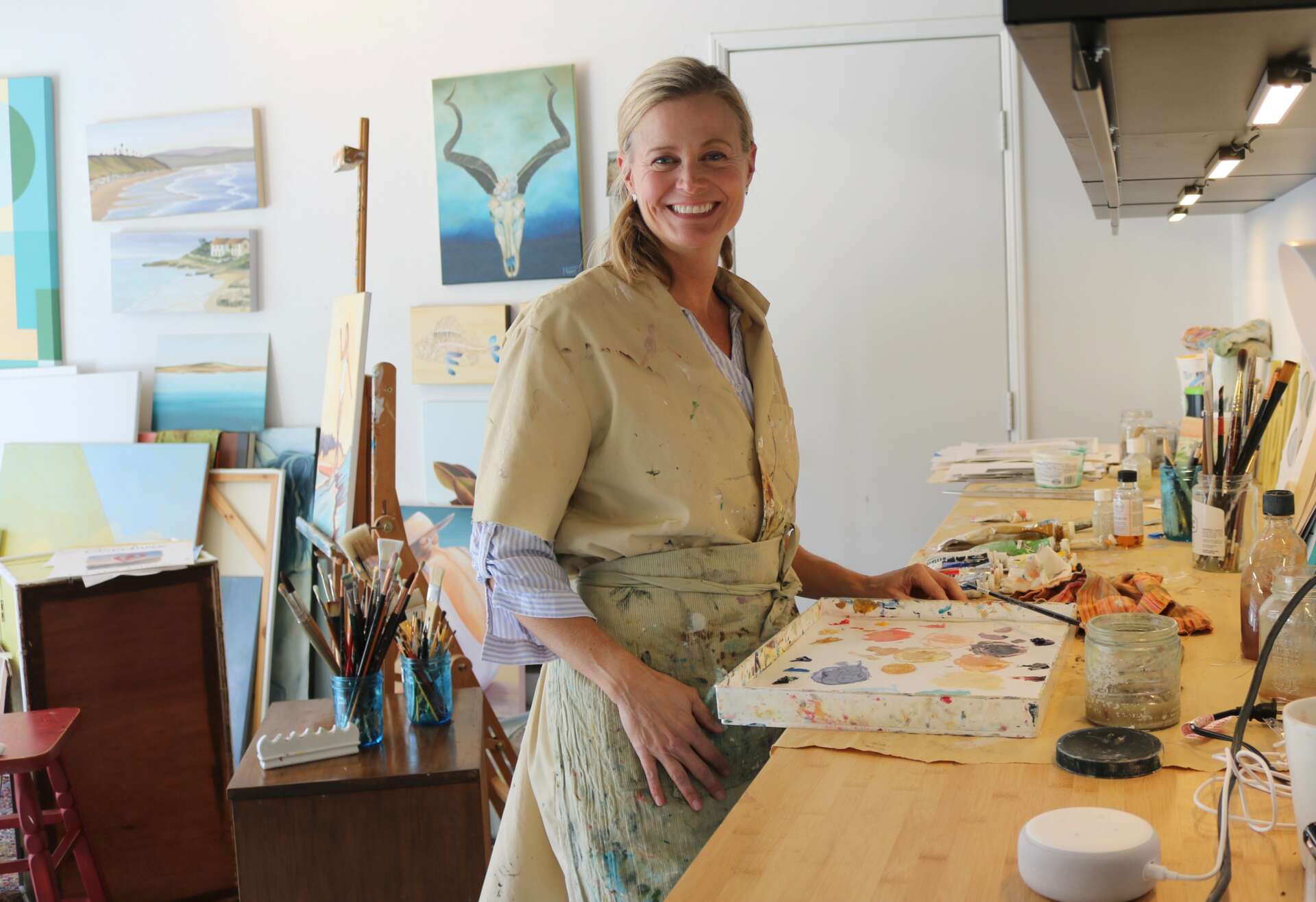Alright – so today we’ve got the honor of introducing you to Megan Jaffe. We think you’ll enjoy our conversation, we’ve shared it below.
Alright, Megan thanks for taking the time to share your stories and insights with us today. We’d love to hear about when you first realized that you wanted to pursue a creative path professionally.
I cannot remember a time when I didn’t love to make art. I realized I was good at it early on which probably helped motivate me to feed that passion. Throughout my high school years I was always in an art class or drawing something for friends. When I got to college, I didn’t even think one could major in art because that would mean you were going to, upon graduation, pursue a career as an artist. That sounded about as realistic as pursuing a career in monkey grooming. So, while I took some art classes while in college, I graduated with a major in Spanish Literature and went on to become a middle school Spanish teacher for 10 years. My path to a career as an artist would not be a direct one. The pull to create is strong for artists, so while I was enjoying my teaching career, I was also still painting on the side. I started taking some classes for fun at a local university. It was while taking these classes that the seed was planted to consider a career as an artist thanks to a few interactions with fellow artists . One night, in a studio life painting class, I was finishing up on a portrait of the model when a fellow student approached me and asked if I’d be willing to sell my painting to him. Not long after that night, I was at a street fair with my mother and a fellow art student stopped us to say hello and told my mother he loved my art and thought I had a special talent. The next semester I had enrolled in a new painting class and on the first night, after I had begun the assignment, the professor came by, watched me paint for a bit, and instead of offering me an expected critique, she whispered in my ear, “What are you doing in here?” I was startled by her question and wondered if I should pack up my brushes and run. She then clarified her question and told me I was too advanced for her course. It took all of this external input for me to change the way I looked at my art. I’d never looked at it as good or bad, advanced or primitive, it was just what I was creating at the moment. It was those encounters that made me think maybe a career in art isn’t just for the lucky or the uber-talented.
I decided I would sign up for a local street art fair and see how I did there. I immediately scrambled together my best paintings, invented a business name, found a credit card imprint device (this is before the days of cell phones and Venmo), and manned my tent for the weekend. Participating in this fair was a terrifying risk for me. It was one thing to have peers and teachers say they liked your art, but what about the general public? What if I sat there in my tent and no one even stopped by? Luckily, that’s not what happened. I had a great time, met wonderful people, and sold almost all of my paintings. I was buoyed by the positive response to my art and was pushed one step further to pursue it as a career. And then I got pregnant with my first child.
I was excited about the new addition to our family and believed my sweet little baby would coo quietly by my side while I painted. Anyone with kids is laughing at this naiveté right now. Needless to say, not a lot of painting was getting done. When my second baby arrived three years later, painting was starting to recede further into the background. Both of my daughters had medical issues that required my full-time attention for many years so not only was my art put on hold, I also stopped teaching all together.
For about 10 years my life was fully dedicated to the care of my daughters. I was able to do small paintings here and there and am incredibly grateful that my husband and I had the resources that allowed me to be parent that my daughters needed to thrive. About four years ago, I realized I had gained a bit more agency over my own time, and decided to dedicate myself back to my art. Maybe it’s a gift of age, or maybe I was just so hungry to create again, but the fear of starting my own art business didn’t feel quite so scary this time around. That’s not to say all the doubts were gone, but I just didn’t give them much airtime. Social media has been a huge resource, not only connecting me with potential collectors but other artists and communities as well. I’m currently a part-time artist as I still have other responsibilities demanding my time but I know that each year will bring me closer and closer to my goal as a full-time artist. I am grateful that this is a career with no expiration date and with nothing but a growth potential with each year that passes.
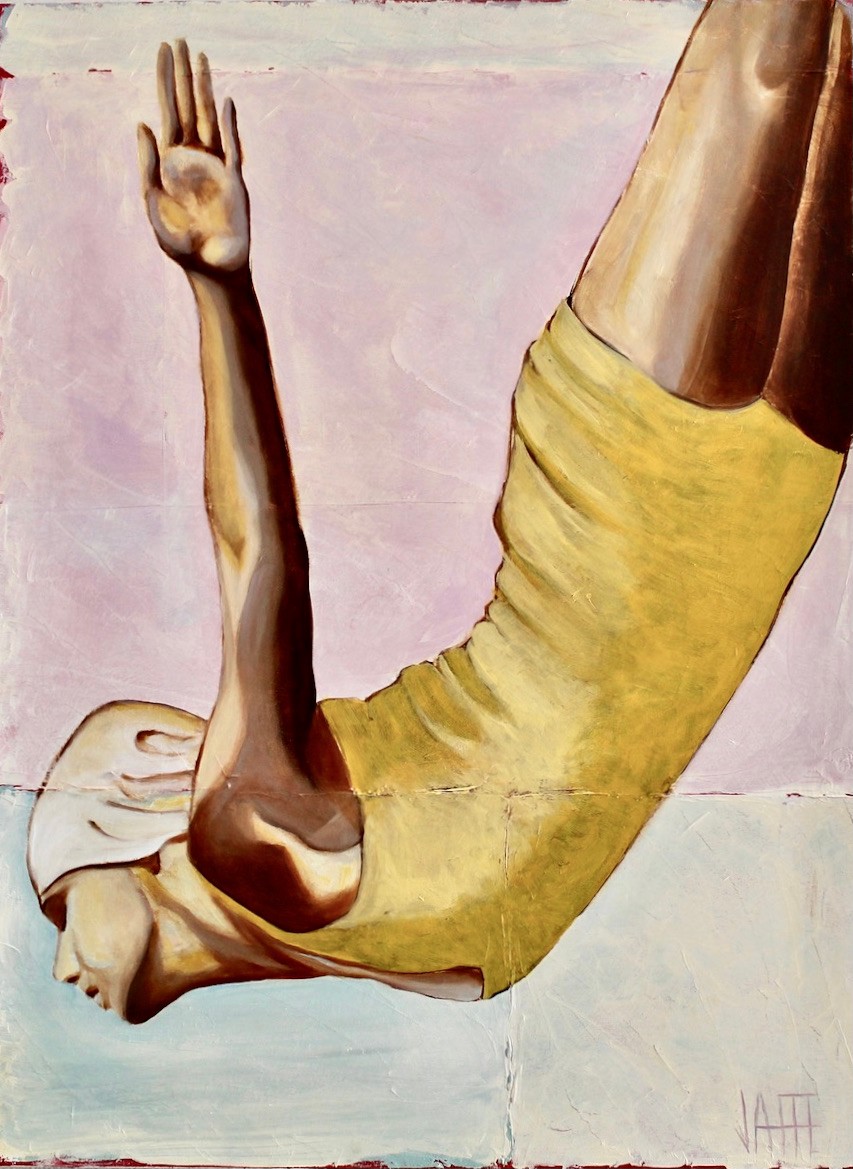
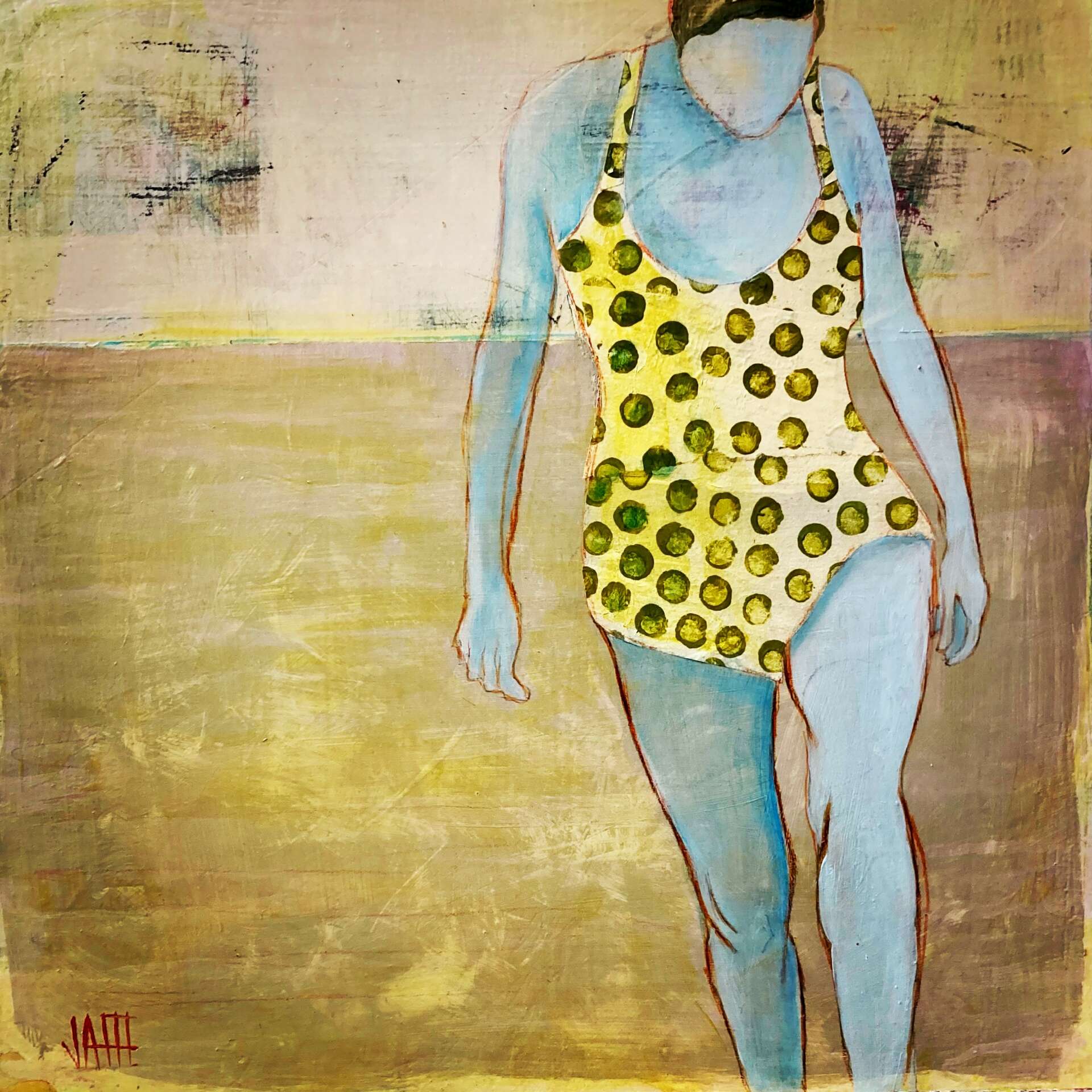
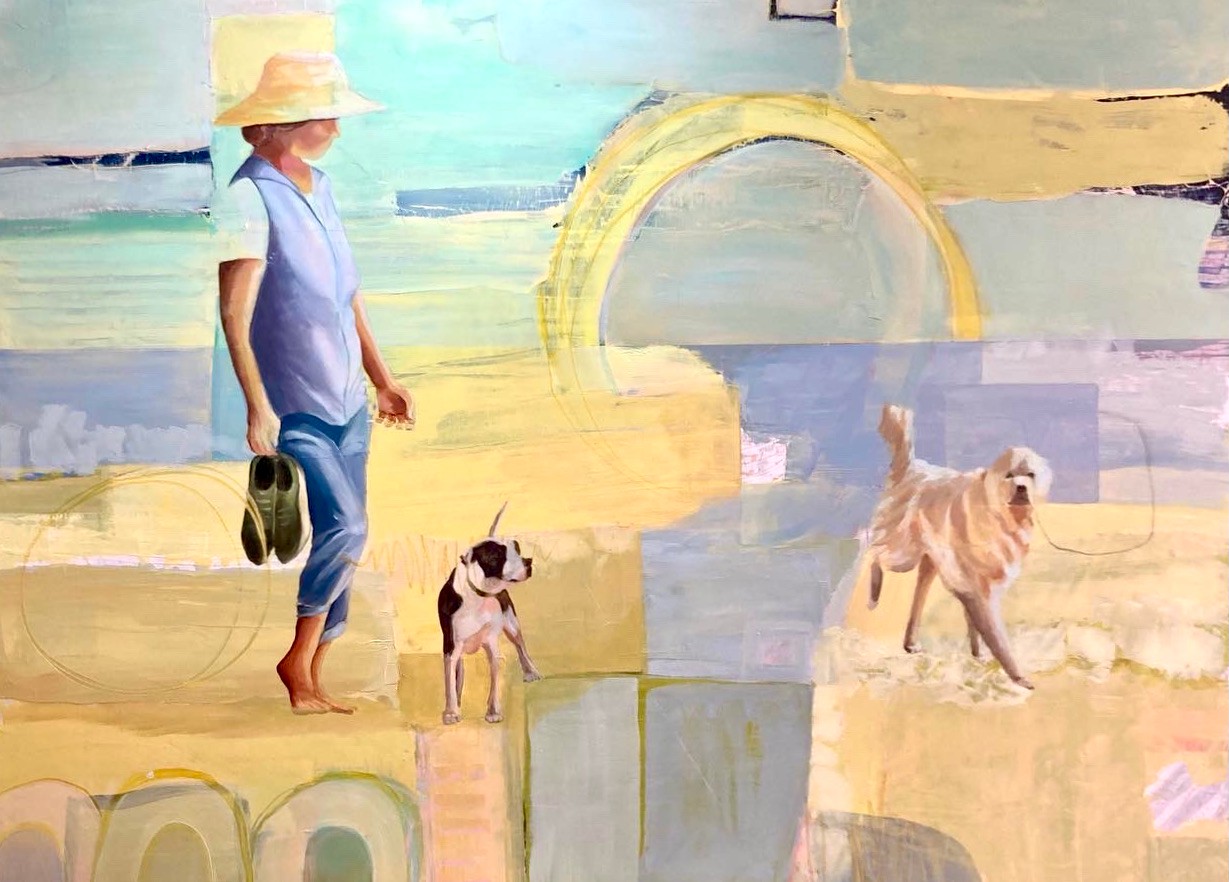
As always, we appreciate you sharing your insights and we’ve got a few more questions for you, but before we get to all of that can you take a minute to introduce yourself and give our readers some of your back background and context?
I think most kids are drawn to art, and I was no different. I began drawing at an early age and just happened kept with it because I found it both challenging and rewarding. However, I never considered it more than a hobby until much later in life, after already having a career as a teacher. My motivation to pursue art really came from external influences. I truly thought a career in art wasn’t realistic so it wasn’t until I sold a few paintings and was encouraged by other artists that I explored this path.
I am now about four years in to working professionally as an artist. I have learned so much in this short time and still have so much more growth ahead of me. The balance of time has been one of the biggest challenges to working professionally. I’ve had to be diligent about structuring my time to dedicate to creating new paintings, experimenting, and completing commissioned works. What I didn’t anticipate was the large amount of time that must be spent on the business side from positing on social media platforms to setting up and managing an online art store, and applying to art calls and shows. Once I’ve attended to the business side of things I love the portion of time I get to dedicate to commissioned paintings. I create all sorts of contemporary custom works for clients from landscapes to portraits. I usually work off of a photo if it is a portrait and will communicate often throughout process to confirm direction of the piece. When I’m not working on a particular commission piece, I’ll turn to what I consider my personal work. This is art that is not commissioned but rather an exploration in what I’m interested in at the time. My work is currently focused on figures placed in abstracted seascapes. I am incredibly drawn to the ocean and the feeling I get when I’m near it. I work first on an abstracted background to embody that sense of freedom and vastness that comes when looking out over the ocean. Then, I will place different figures, focusing on their relationship to the space, and rendering them more realistically to add contrast against the abstract. I’m enjoying this unique line of exploration as it challenges me to leave the safe harbor of painting exactly what I see and risking failure to find new ways to convey my perspective.
I am excited to have embarked on this path as a professional artist. It was in no way a direct path and I know it will have its challenges but I am proud that I have remained true to the course. It is very easy to listen to the demons when say a painting fails or when life’s demands override the quiet time necessary to create. I have found that no matter what the obstacles are that may momentarily sideline me from creating, the pull to do it eventually wins out. Art is something I know I will do for the entirety of my life and I am grateful to be fueled and often buoyed by this passion.
Learning and unlearning are both critical parts of growth – can you share a story of a time when you had to unlearn a lesson?
I spent most of my practicing years as an artist refining my practical skills. I felt that being a good artist meant being able to render a solid representation of a subject; be it a flower, a landscape or a portrait. I really enjoyed this process and the improvement of my skills over time. But what I wasn’t consciously aware of was that in the pursuit of skill I was overlooking creativity and the expression of self. In all the classes I had taken, this was never addressed. It was more about lessons on perspective, shadows, color mixing, and value — all important, of course — but no one ever asked, “Where are you in these paintings?” So, one day, after decades of painting and drawing, I found myself stuck. I didn’t know what to paint or even why I was at this impasse. I knew I needed a different direction but didn’t even know how to get there. As the universe works in mysterious ways, it was at this moment when I came across a gifted artist and teacher online, Nicolas Wilton of Art2Life, who opened up a whole new approach to creating art. So much of it is about paying attention to what I love; what kinds of marks, colors, shapes, and images inspire me? What do I want to feel when I’m creating my work and what feeling do I want my work to convey? These simple questions have opened up so many new avenues of exploration. It has forced me to pay attention when I’m drawn to a certain color or the shape of a certain leaf. Instead of just quickly enjoying it, I’ll now take note that it has caught my attention. I explore they whys, Why does that color resonate with me? Why does a certain pattern catch my eye? I literally write it down or sketch it out, bring it to my studio and pin it up, knowing at some point these findings will inform my painting. The same goes for words, song lyrics and poems. My studio is filled with little sheets of paper with poems on them and while the actual words may not directly end up on the canvas (although sometimes they do) the sentiment is what will inspire the next piece. I even changed the way I approached a painting. I used to do a lot of preparation before starting a painting. I’d have a reference photo or a preliminary painting that I’d paint in a sepia tone first. Then I’d spend some time thinking about the palette and any changes in the composition. Because I was dedicated to painting in oil, I would work in layers allowing for drying time after each session. The work was thought out and often methodical. There is nothing wrong with this way of painting and I created plenty of paintings I really love this way but I knew I needed to expand my technique and approach. So, I put the oils aside for a bit, picked up acrylics, wood panels, collage papers, and all sorts of different mark-making tools and set out to shake things up. I now will work on multiple paintings during one session (fast-drying acrylics allow for this) and start without a plan or reference photo. I imagine this is how jazz musicians must feel when they are playing. It’s a way of creating completely from call and response that allows for risk-taking and exploration. Once a piece has reached a place where I like it then I will add a more representational element so that I’m indulging the best of both worlds, the abstract and the realistic. This newfound approach has changed the way I see and think about art. I realize the intention of the work I want to create is less about the skill involved and more about the heart.

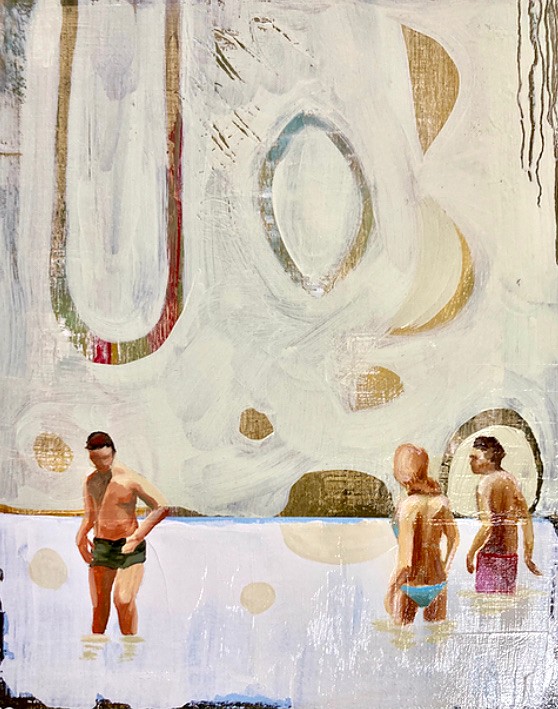
What’s the most rewarding aspect of being a creative in your experience?
I have a distinct memory from when I was about 16 years old. I was walking down the street with a friend and his father, who happened to be a lawyer. I pointed out a bush that had beautiful flowers blossoming on it. The father, turned to me and said, “You could never be a lawyer because you’re always too busy noticing pretty things.” I never knew if what he said was intended as a compliment or a slight. I was too shy to ask at the time and quite frankly, he was right. I would never be a lawyer and I do notice pretty things and I think that is one of the best parts about being an artist, you notice things and not just pretty things. The world never disappoints in delivering an abundance of beautiful and interesting patters, colors, shapes, and textures. Every day when I venture out of the house, whether it’s to walk my dog or go to the store, I see this as an opportunity to find inspiration. I know with certainty there will be something that stops me and demands that I notice it. Sometimes its an obvious beauty, like the ocean, but often it’s something more subtle like the rust pattern growing on a metal grate, or the color palette of olive green moss collected on a pale pink wall. A walk on the beach means I get to observe the gestures of other beachgoers. I notice how people’s bodies relax and lean toward each when strolling side by side or the way a swimmer’s hands touch the water as she works her way into the sea. There are many rewarding aspects of being an artist — the satisfaction of creating something from nothing or being able to express yourself through your work. But what strikes me every day as the most rewarding aspect of creating is the inspirational beauty of this life and the gift that I’ve been given as an artist to notice it.
Contact Info:
- Website: www.meganjaffefineart.com
- Instagram: www.instagram.com/meganjaffefineart
- Facebook: www.facebook.com/meganjaffefineart


